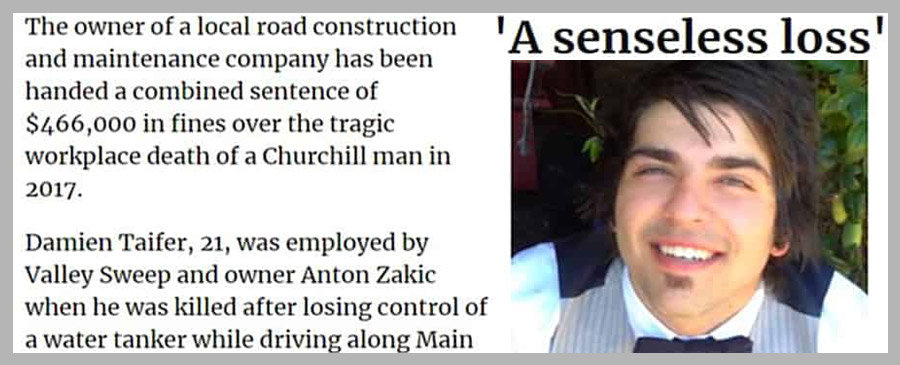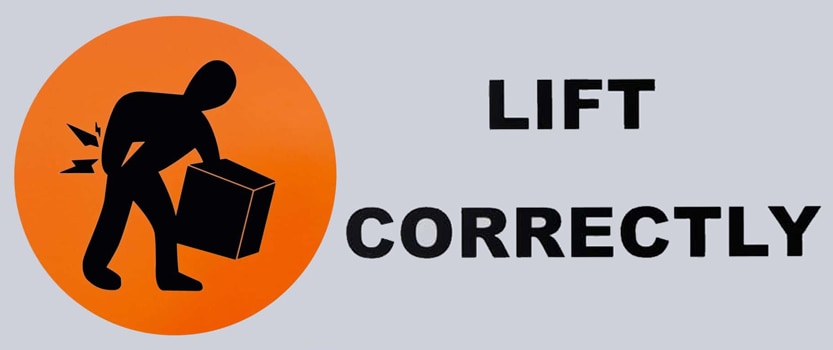Australia has a process of accountability where Ministers and Heads of Government Departments and Authorities are required to answer attend Senate Estimates. Few people outside of the Canberra bureaucracy pay much attention to the occupational health and safety (OHS) information provided. Most media pay attention to disputes and statements that have a more general political appeal, but there is important information about workplace health and safety, such as an update of the progress on Marie Boland’s recommendations or the role and activity of Safe Work Australia (SWA).
Category: evidence
Truck driver death is relevant to all
Well before the push for Industrial Manslaughter laws was the occupational health and safety (OHS) offence of “reckless conduct”. A media report from the LaTrobe Valley Express recently showed how one employer’s neglect of basic safety practices and processes resulted in the death on 21-year-old Damien Taifer.
What the judge said about Dreamworld, other than the penalty
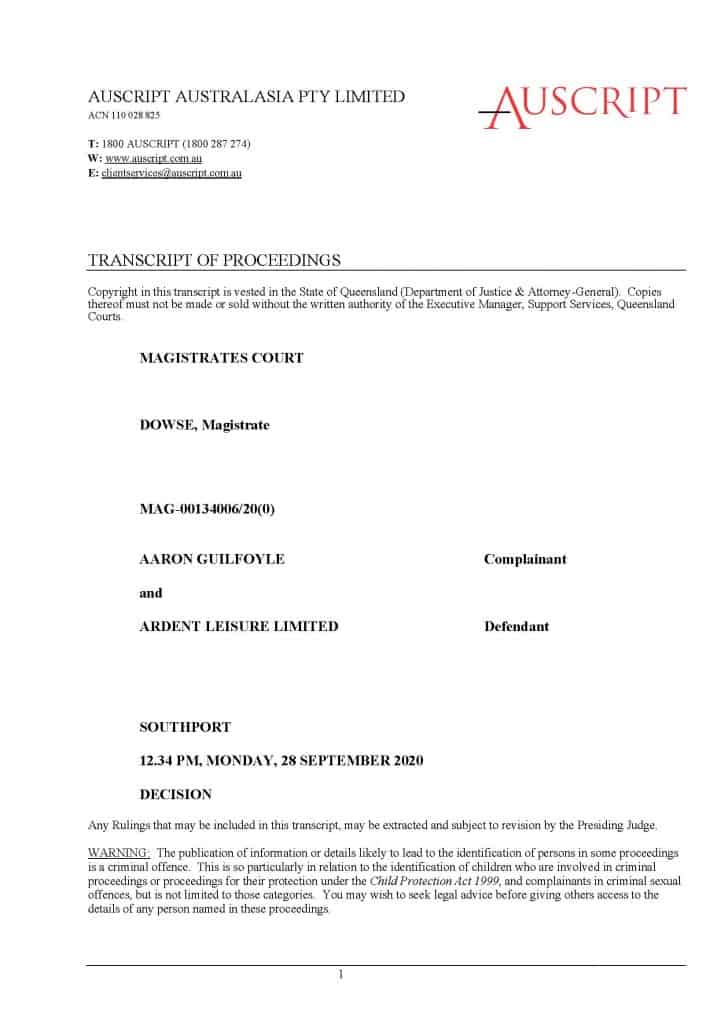
Some readers raised eyebrows on the article titled “No lessons in the Dreamworld penalty” but the point was that the occupational health and safety (OHS) due diligence and governance lessons were there months ago following the Coroner’s damning findings.
Most of the media’s attention has been on the record size of the financial penalty but looking at Judge Dowse’s decision in the case provides a better understanding of that penalty, the breaches of the safety legislation and the opinions of the judge.
The myth of “correct lifting technique” persists
In 2017 Work Health and Safety Queensland (WHSQ) released this advice about reducing the physical risks associated with manual handling:
“The research evidence shows that providing lifting technique training is not effective in minimising the risk of injury from manual tasks.”
So why is “correct lifting technique” still being included in safety procedures and Safe Work Method Statements (SWMS) three years later?
Precarious Work, Pandemics and Australia’s Future – Let’s Not Forget the Link
This is a guest post by Michael Quinlan & Dr Elsa Underhill (links added).
In mid- August 2020 Victorian Premier Daniel Andrews labelled insecure work as toxic and argued a fundamental policy reset was required into the future. He stated:
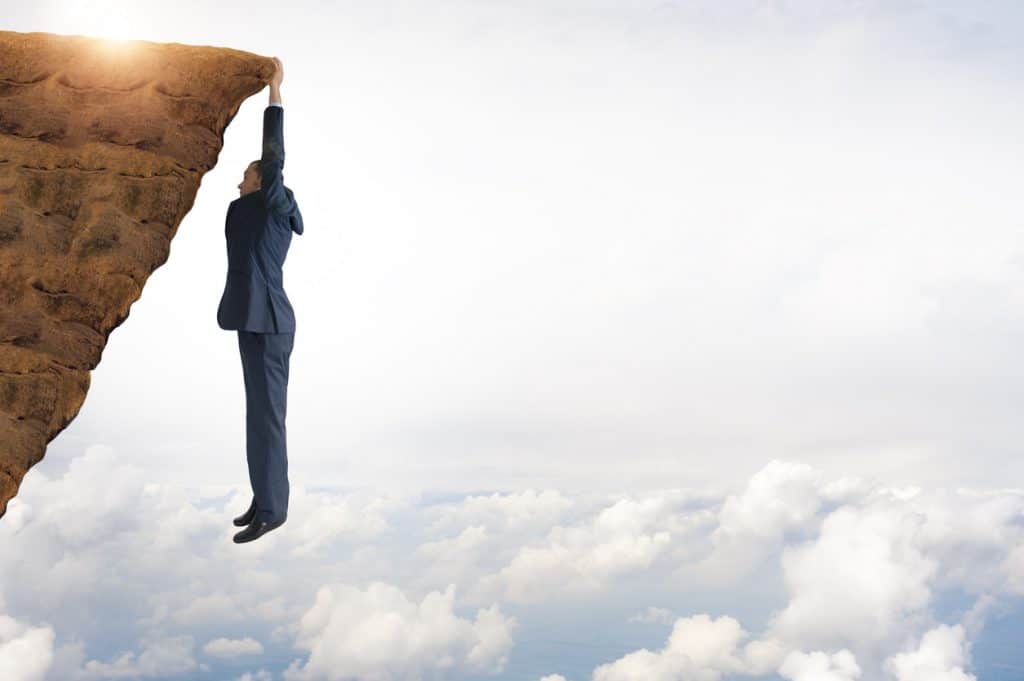
Insecure work is toxic. There is nothing good about insecure work, and when this is done, when this virus has been beaten, we will need to commit ourselves to do something really significant about it. It is no good for anything, for families, for a sense of security [and] for public health, for any purpose. We have a lot of people who work very hard but have no safety net to fall back on and that is just not something we should settle for .
(Guardian 16 August 2020)
The observation generated little publicity and was soon forgotten as the Victorian COVID outbreak caused deepening concern across the nation. But the first major Australian political leader to call precarious work for what it demonstrably was should start a long overdue public debate.
Continue reading “Precarious Work, Pandemics and Australia’s Future – Let’s Not Forget the Link”Work-related mental health remains contentious
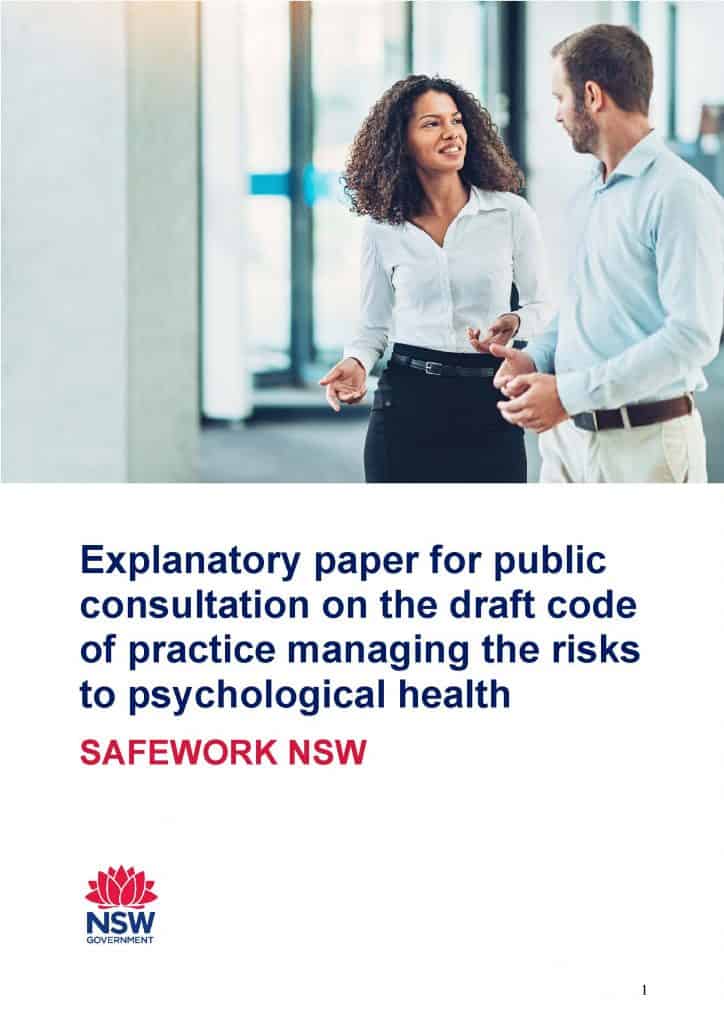
This article is about SafeWorkNSW’s recently released Draft Code of Practice for Managing the Risks to Psychological Health, but it is not going to focus on the Code. Instead the focus will be on the supplementary Explanatory Paper because this presents the rationale for the Code’s contents and, in many ways, is a more useful tool for occupational health and safety (OHS) discussions. However, just as the Code has structural and legislative limitations as part of its Purpose, the Explanatory Paper is a support document for submissions on the Draft Code and therefore has its own limitations.
Analysis of business impacts of COVID19

The Australian Industry Group recently released the results of a survey of its members about how COVID19 has affected their businesses. Understandably, the financial future of the businesses is the major concern but occupational health and safety (OHS) has been part of the business responses.
OHS was part of the initial scrabble to cope with the localised effects of a global pandemic. The report says
“Increased workloads due to new OH&S and healthcare procedures were still being reported by 6% of businesses in August, down from a high of 25% in the first stages of the pandemic in March. In Victoria, 10% of businesses reported concerns about the increase in this type of workload in August, compared with 2% in New South Wales and no businesses in Queensland.”
page 8


